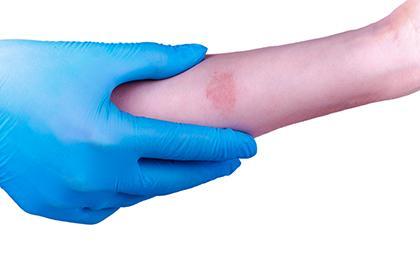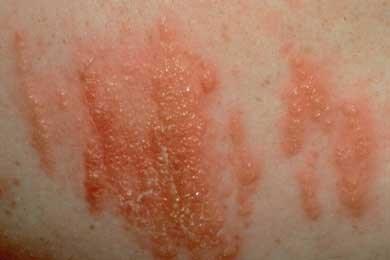Browse some of the recent articles published in medical journals authored by our own physicians. CUTIS Acrokeratoelastoidosis and Knuckle Pads Coexisting in a Child, co-authored by Christian Oram, D.O. WILY ONLINE LIBRARY Multinucleate cell angiohistiocytoma: Case report and literature review, co-authored by Kelly Quinn, D.O. CUTIS Merkel Cell Carcinoma: A Review, co-authored by Christian Oram, D.O.
Do you feel you’ve tried just about everything to get rid of your acne but still see blemishes? Don’t despair. To see clearer skin, you probably just need to make some changes. The following tips from dermatologists can help you get started. 1. Give an acne treatment at least 4 weeks to work. Using a new acne product every few days…
Source: American Academy of Dermatology
**If you find a sign of Lyme disease on your skin, see your doctor right away. When caught early and treated, Lyme disease can be cured with antibiotics and most people recover fully. Lyme disease is caused by a bite from a black-legged tick. If you are bitten by this tick and develop Lyme disease, you may see a bull’s-eye…
Moles on a child’s skin are generally nothing to worry about. New moles appear during childhood and adolescence. As the child grows, the moles will naturally get bigger. It’s also normal for moles on a child’s skin to darken or lighten. Some moles fade away. These changes are common and rarely a sign of melanoma, a type of skin cancer…
The U.S. Food and Drug Administration (FDA) has approved hyaluronic acid filler, Restylane® Lyft, for use in the hands. It is the first and only hyaluronic acid injectable gel to be FDA approved for a non-facial body part. Calcium hydroxylapatite filler, Radiesse, is approved by the FDA for use in the face and hands. According to the FDA, Restylane Lyft…
An itchy rash or sunburned skin can quickly sideline summer fun. You can help keep your days carefree and easygoing by learning how to prevent these summer skin problems. 1. Acne breakouts: When sweat mixes with bacteria and oils on your skin, it can clog your pores. If you have acne-prone skin, this often means breakouts. Dermatologists recommend the following…
Many people get a rash from poison ivy, poison oak, and poison sumac. This rash is caused by an oil found in the plants. This oil is called urushiol (you-ROO-shee-all). The itchy, blistering rash often does not start until 12 to 72 hours after you come into contact with the oil. The rash is not contagious and does not spread.…
When shopping for sunscreen, your choices can feel overwhelming. You’ll find lotions, sprays, gels, and creams. With so many different SPFs, it can be hard to tell which one you need. To make it easier to buy sunscreen, the American Academy of Dermatology is sharing a simple two-step process. Here’s what you can do to find a sunscreen that’s right…
Follow these tips to protect your skin from the sun’s damaging ultraviolet rays and reduce your risk of skin cancer: Seek shade when appropriate, remembering that the sun’s rays are strongest between 10 a.m. and 2 p.m. If your shadow is shorter than you are, seek shade. Wear protective clothing, such as a lightweight long-sleeved shirt, pants, a wide-brimmed hat…










